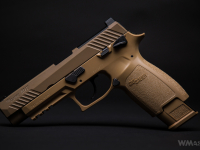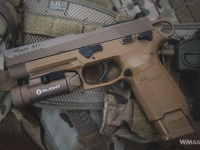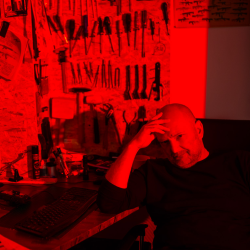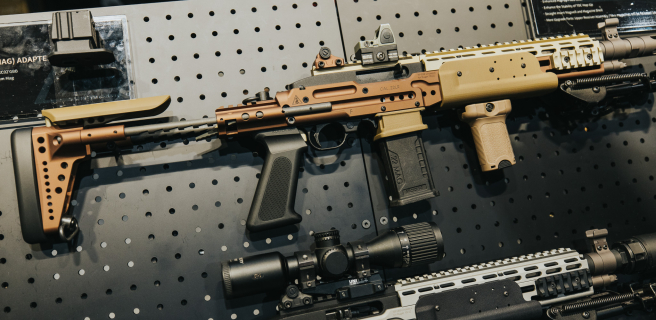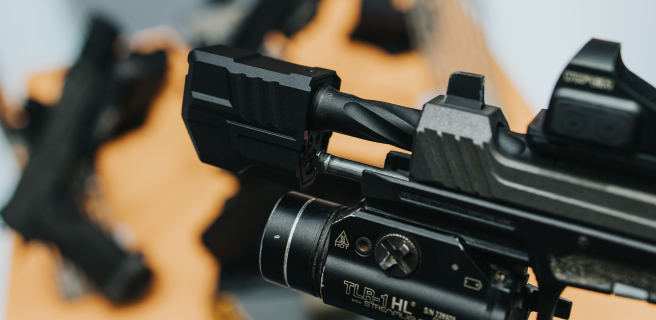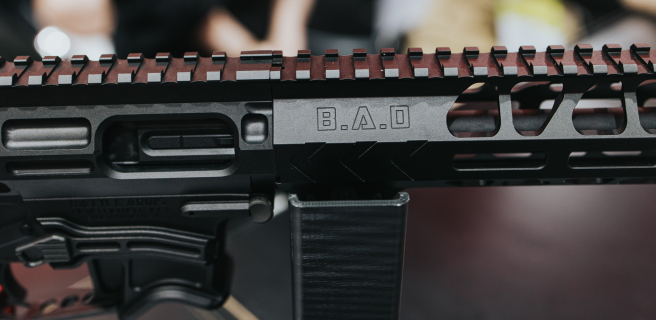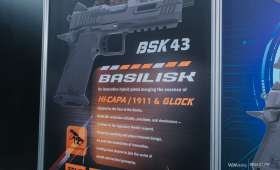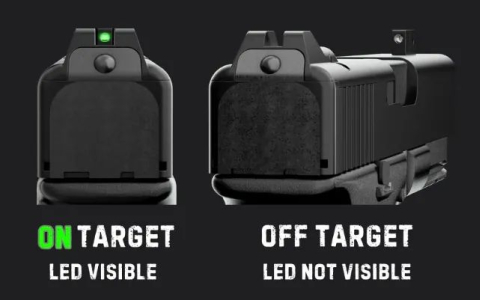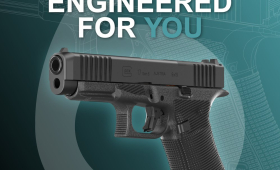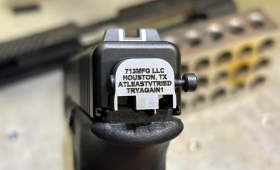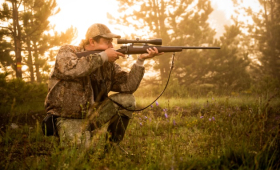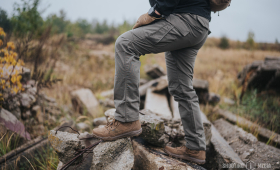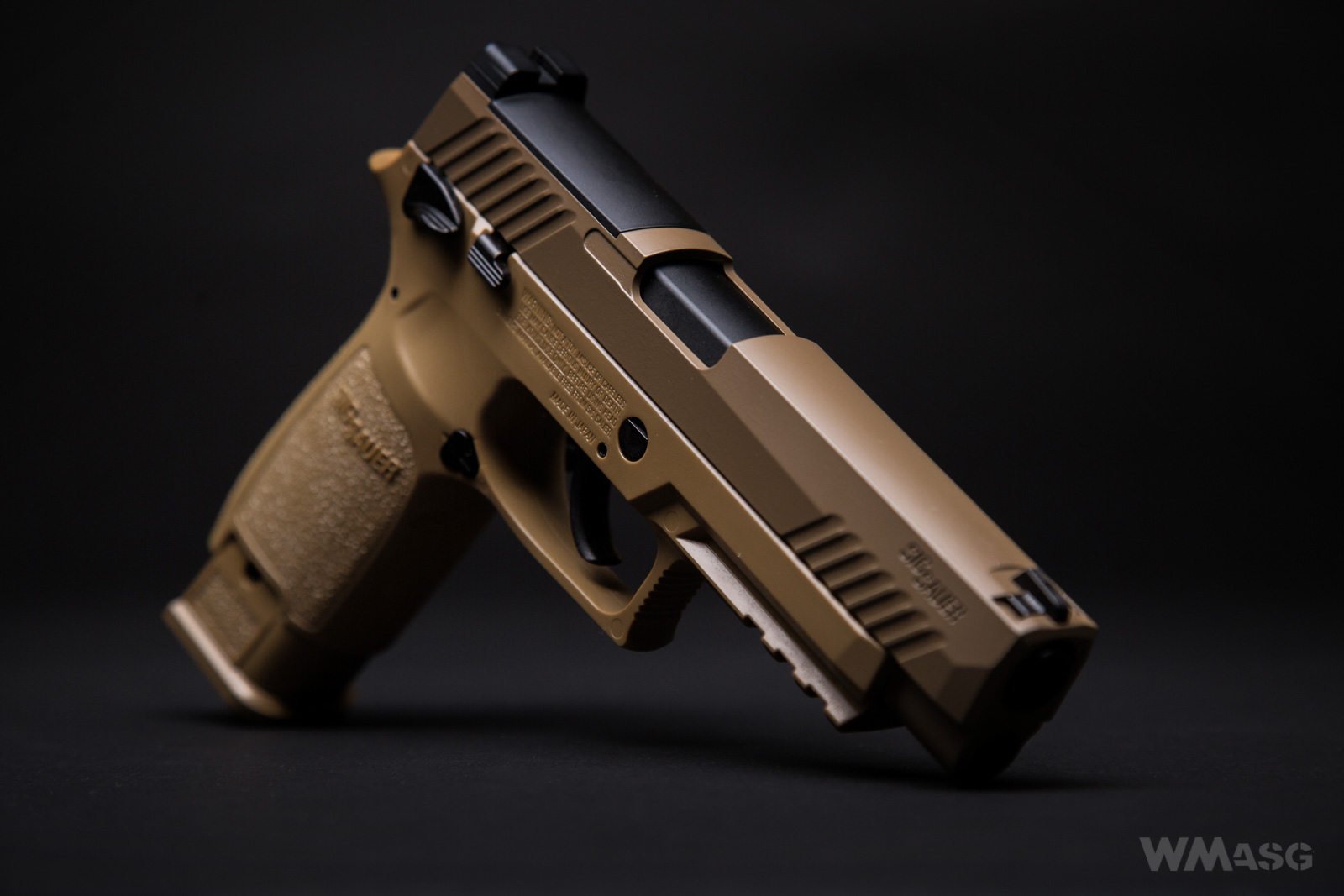
In November last year, SIG SAUER introduced the first pneumatic version of the M17 pistol, a gun recently adopted by the US Army. It is powered by 12-gram CO2 capsules and shoots classic .177 (4.5 mm) Diabolo pellets. In terms of size, weight and color, it is very similar to the real gun. We can even find information on the packaging that it has genuine weight, balance and handling. Well ... It's not entirely true.
Because we are patiently waiting for the possibility of testing the airsoft (6 mm BB) version , we were glad to get the opportunity and take a look at the airgun. We will also try to compare together all three versions of the gun and evaluate how similar the pneumatic versions are to the real gun. But let's get back to the airgun.
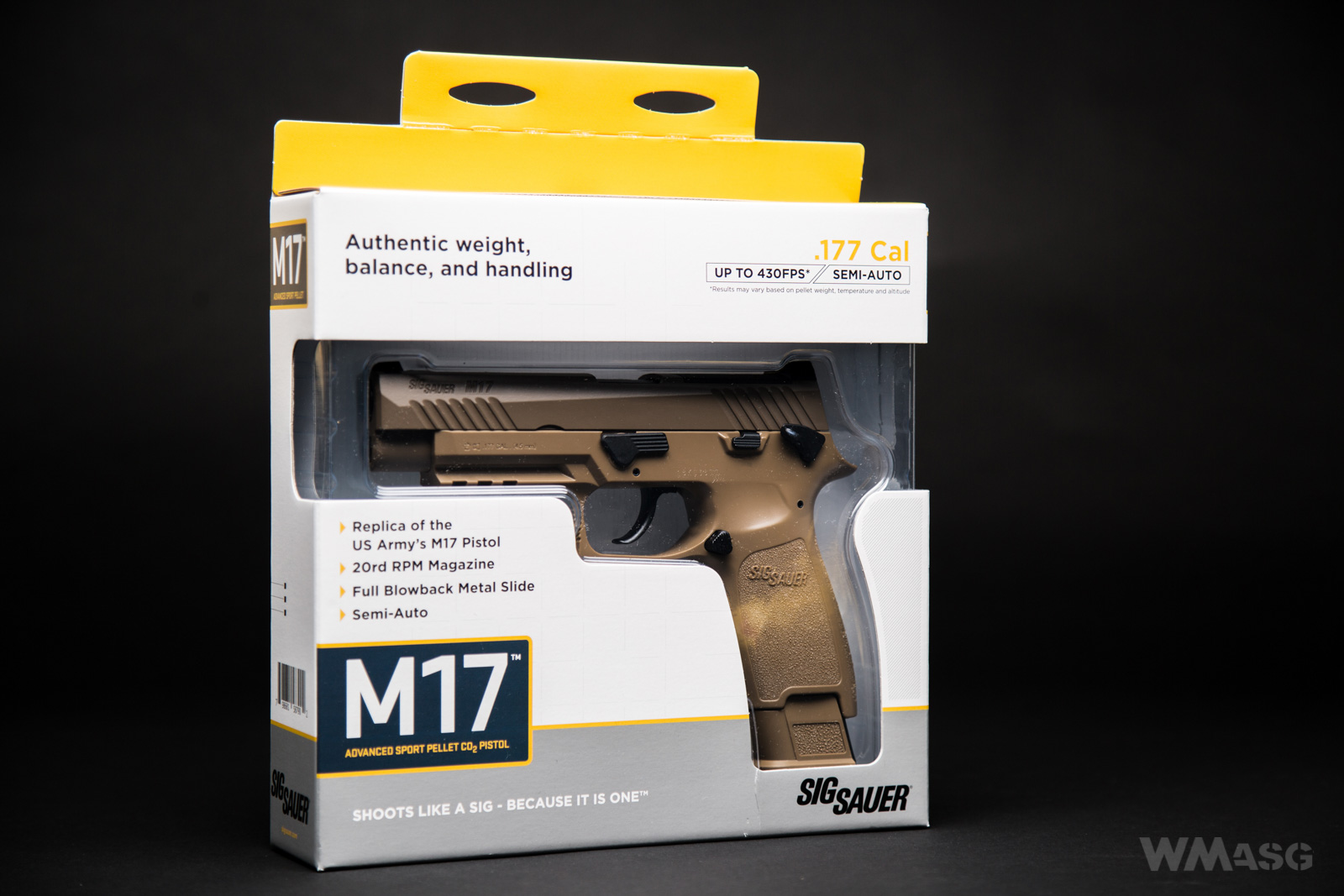
Technical parameters:
- overall length: 203 mm,
- weight: 1000 g (for comparison: the real gun, with the same size, weighs 840 g)
- magazine capacity - 20 pellets,
- muzzle velocity: around 430 fps.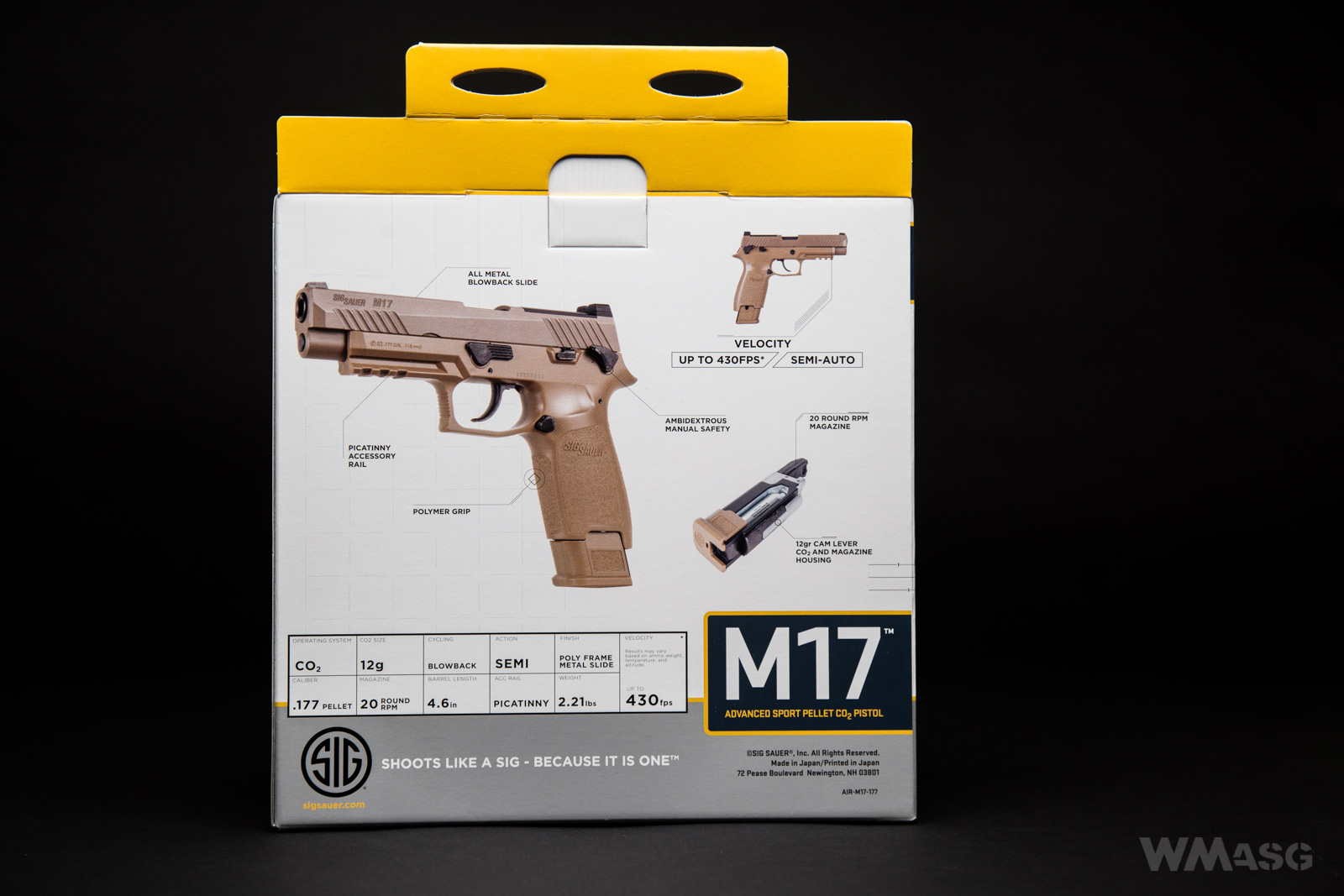
The gun is equipped with a blowback system - that is, the slide moves during shooting, but the "airgun technology" does not allow the slide to stay in the rear position after emptying the magazine. Therefore, the double-sided wings, used in the original for releasing the slide, are only immobile fakes here. The blowback itself is very strong and dynamic. It is also possible to pull the slide manually, but this action does not result in anything as far as the operation of the airgun goes. And here a safety note: the design causes that after taking the safety off, each trigger pull (the airgun works in the DAO mode - double action only) causes a shot to be fired, as if a round was always in the barrel. It does not matter if the gun has been "cocked" or not.
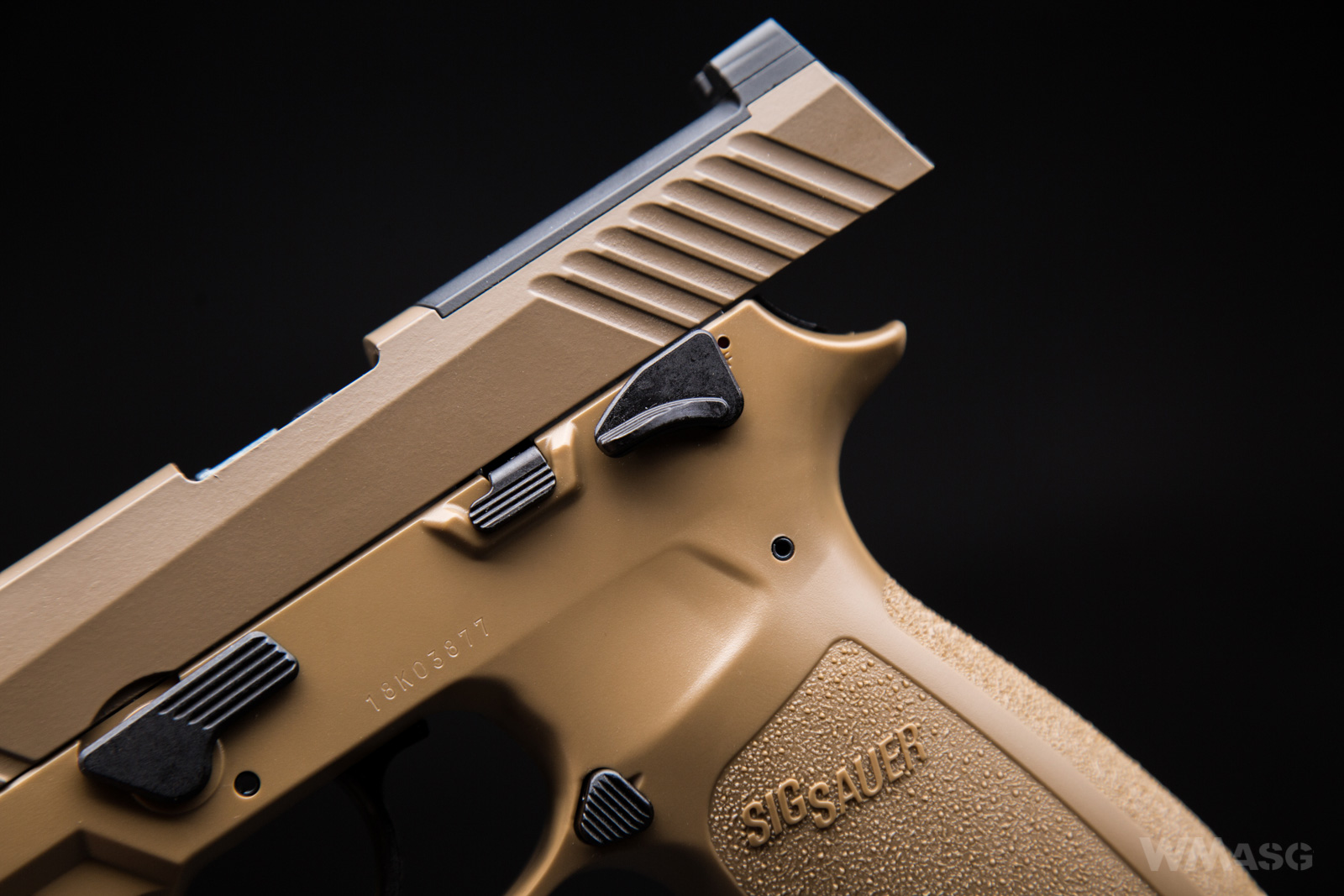
Due to the materials used, the airgun is a "close approximation" of a real gun. The frame is made of plastic, and the slide, sights and manipulators made of metal. No one will be surprised that it is simply an aluminum alloy. A good first impression is reinforced by the manufacturer's markings and the color of the parts.
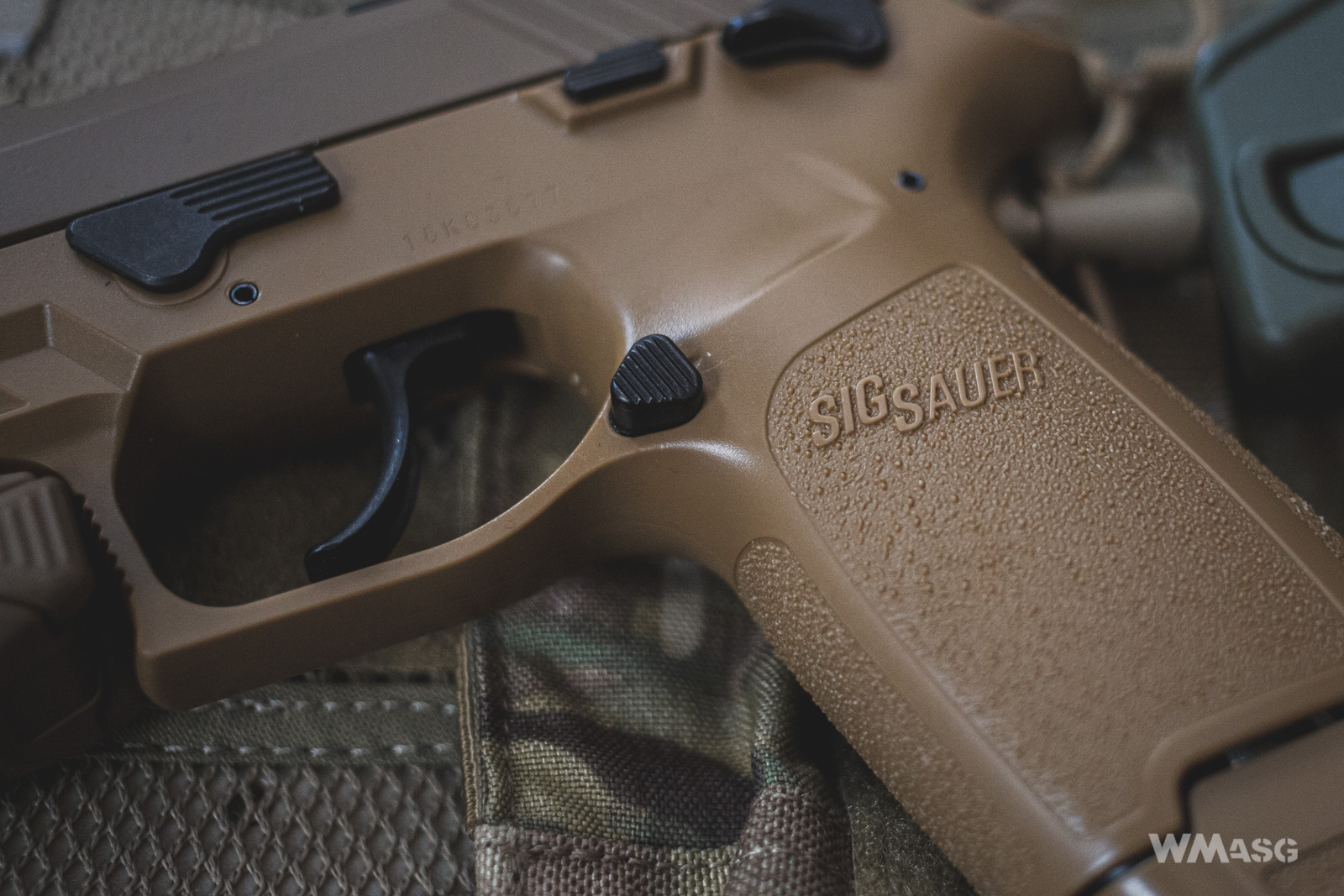
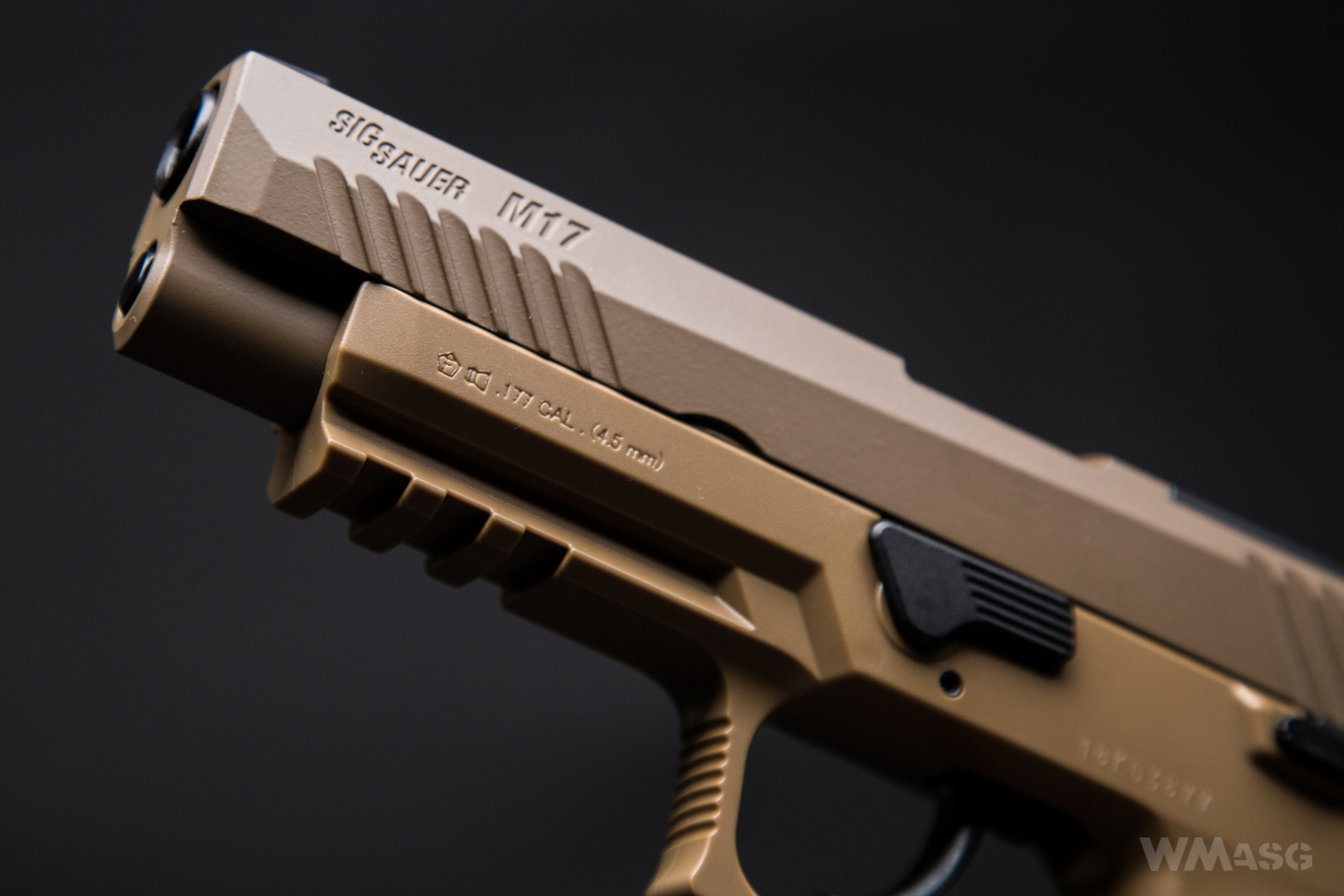
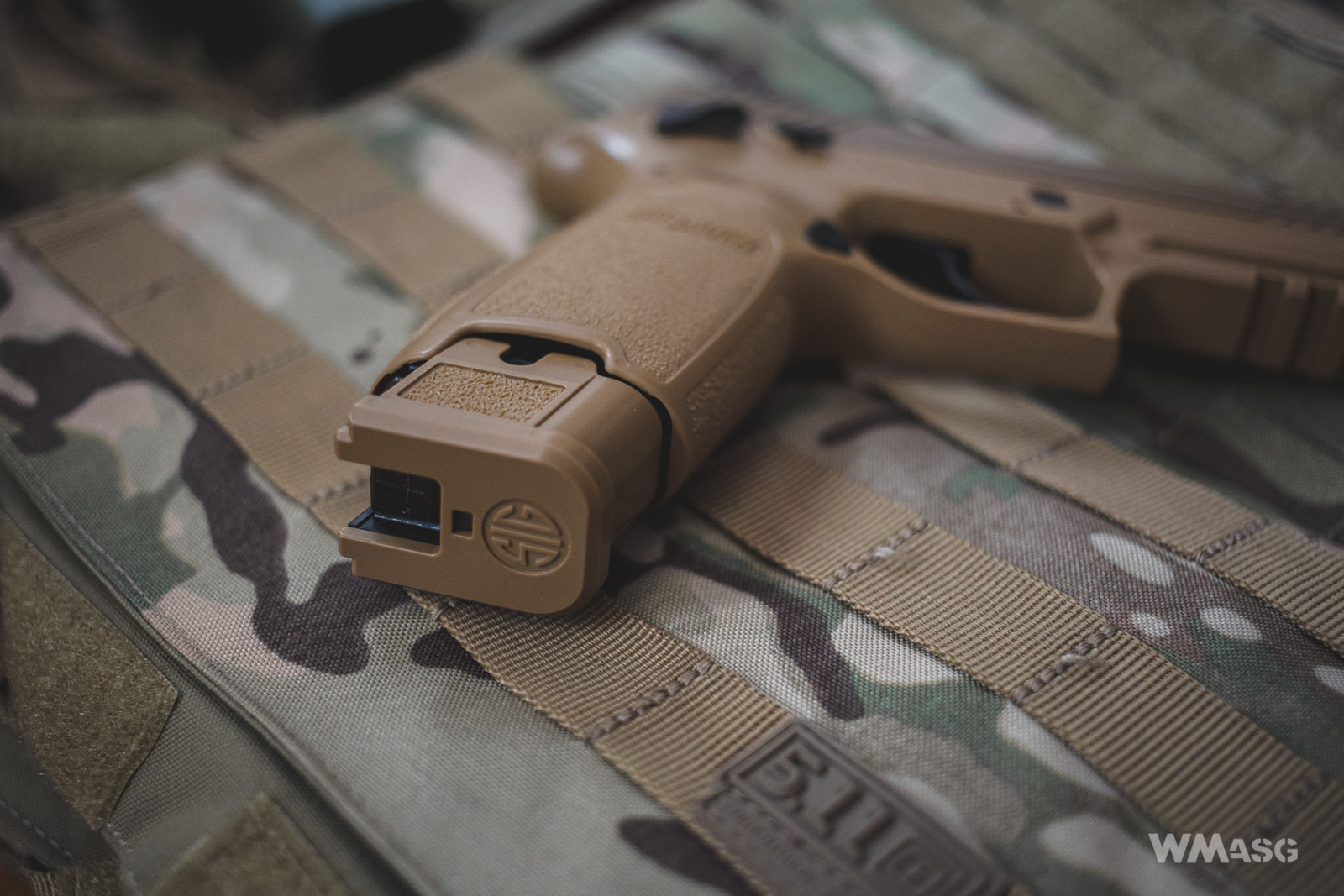
The pistol is powered from a magazine, in which there is a standard 12-g CO2 capsule and the " magazine proper" designed like a kind of chain or a caterpillar. The button marked by the red arrow allows you to remove the chain housing for loading purposes.
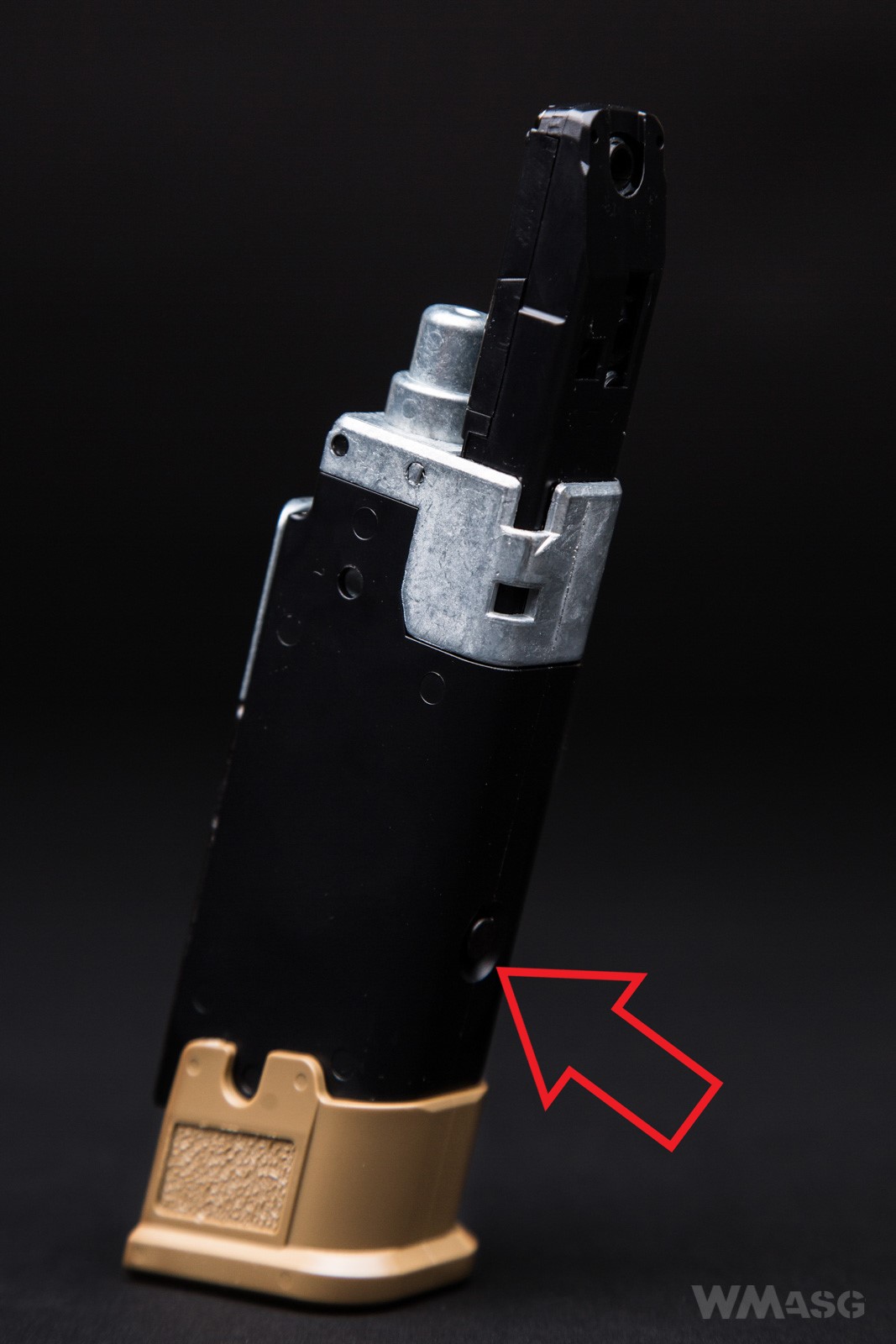
Due to the size of the capsule, the magazine is extended. The lower part of the capsule is hidden in the extension. The system of connecting the capsule to the magazine has been solved in an interesting and convenient way. It is done with a lever that quickly stabilizes the capsule in the right position and seals the connection.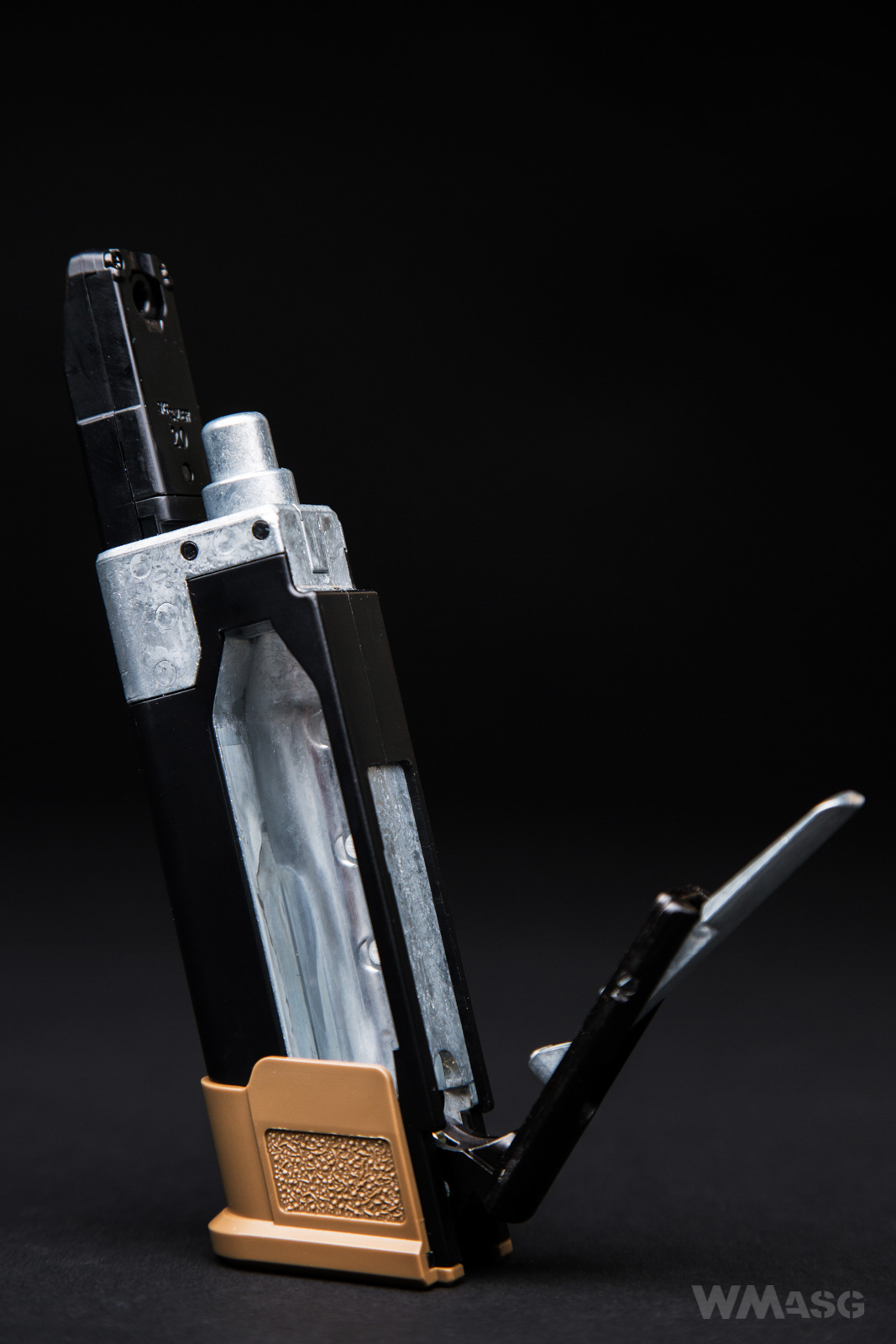
Below the chain in the housing removed from the magazine. The open casing shows the sockets in which single pellets are placed.
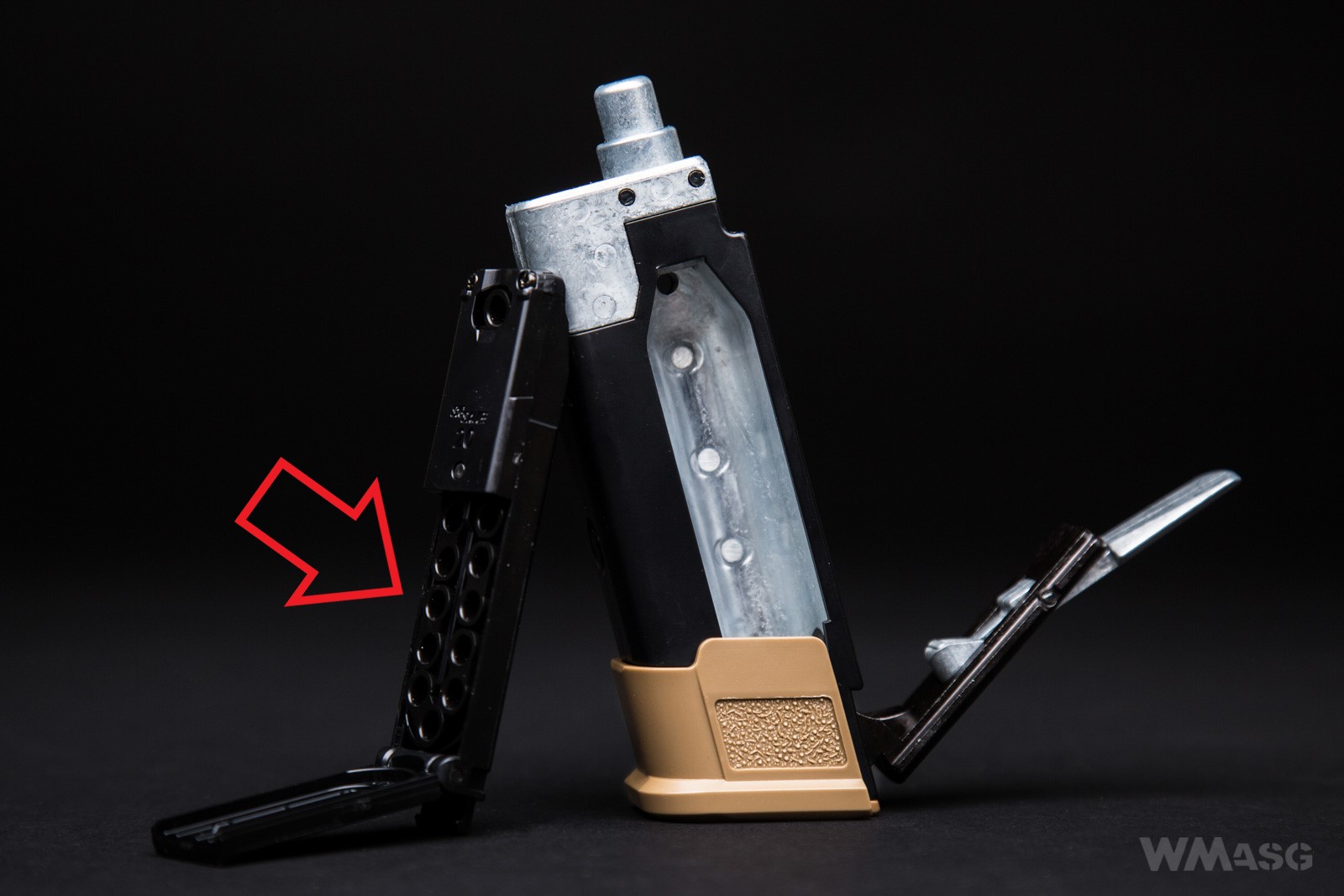
The pistol's design is basically very similar to airsoft (CO2) guns. We have here a similar intermediate chamber with a built-in valve, which with releases a portion of the gas (CO2) with each shot and puts a pellet in motion. An important difference results from the design of the magazine. And this, in turn, is a direct result of the type of ammunition used. While the 6 mm BBs can be positioned in the axis of the barrel in any orientation (identical to a steel round BB pellets), the Diabolo pellets must be oriented with their tips in accordance with the axis of the barrel. Therefore, each pellet is placed in the magazine (chain) in a separate chamber. When pressing the trigger, in the first phase, a special lever catches the chain and moves a chamber with a pellet directly in front of the barrel. The continuous pull of the trigger causes the hammer to hit the valve and release the required portion of gas, the majority of which starts to propel the pellet, and the rest causes the blowback movement. It is worth repeating that the movement of the slide does not set the next pellet in the barrel axis (does not load the next round into the chamber). Another trigger pull starts another cycle. It is because of the use of a chain like magazine, not a single or a double stack magazine, that there is no follower here which, after emptying the magazine, would cause the slide to stay in the rear position.
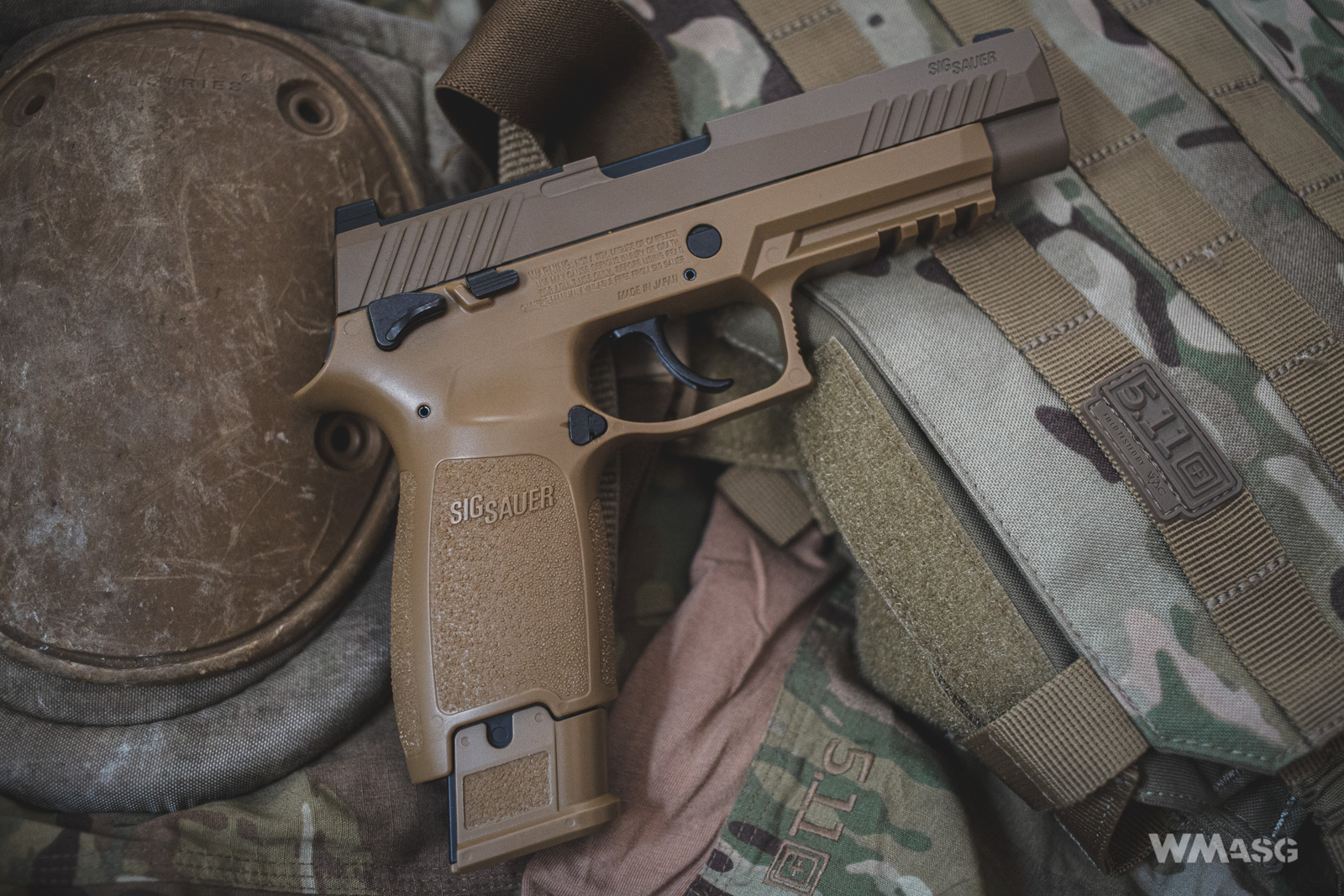
Shooting
While loading the magazine with 20 pellets requires some patience, shooting is very very pleasant. I wrote earlier that the blowback is very strong and dynamic. The target shooting test confirmed these observations. Below, the target is fired at in our editorial shooting range. Temperature was 24°C, humidity was 50%. A Umarex CO2 capsule and flat goblin Gamo Pistol Cup Precision pellets, weighing 0.45 g, were used.
The distance to the target was 10 meters, the airgun was held with both hands, without support and the shooter as standing. Shots were fired in casual manner.
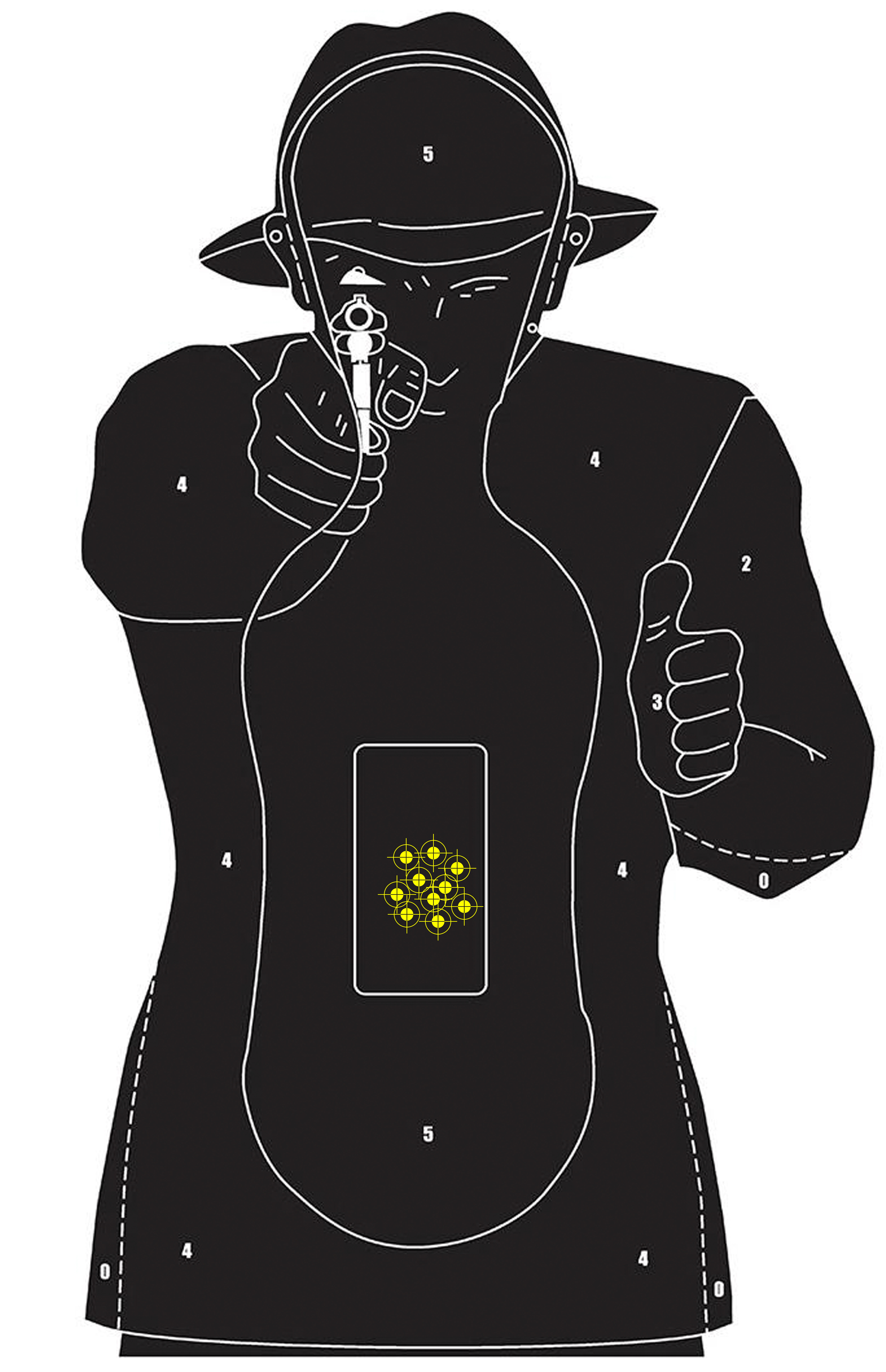
10 shots were fired. The maximum distance between bullet holes was 35 mm.
On one capsule, the gun fired 2 full magazines (40 shots) without a noticeable difference in accuracy and blowback action. We were also able to fire a full third magazine, but the action of blowback was noticeably weaker, especially when firing the last few shots. We did not load the fourth magazine with pellets, but the gun still had some gas in it, which we had emptied firing without ammunition. In our opinion, for those of you who value accuracy above all else, you should consider replacing the capsule after firing two full magazines.
Recreation of the real gun
I initially wrote that we count on the possibility of comparing both pneumatic M17 (airgun and airsoft version) with the real gun. Hence, at the end we will make a few remarks on the similarity of the tested item to a real gun.
We discussed material used earlier. We are also aware of technological limitations, which is why we will not divulge into some of the issues as the slide release, for example. But we also encountered a few simplifications, which have no impact on the operation of the airgun as a sports or recreational weapon, but those simplifications significantly (and unnecessarily) reduced the level of recreation of the real gun. Below are some examples.
A different shape of the ejection port, no extractor, no undercut of the slide. In the thumbnail, the real gun with the differences marked.
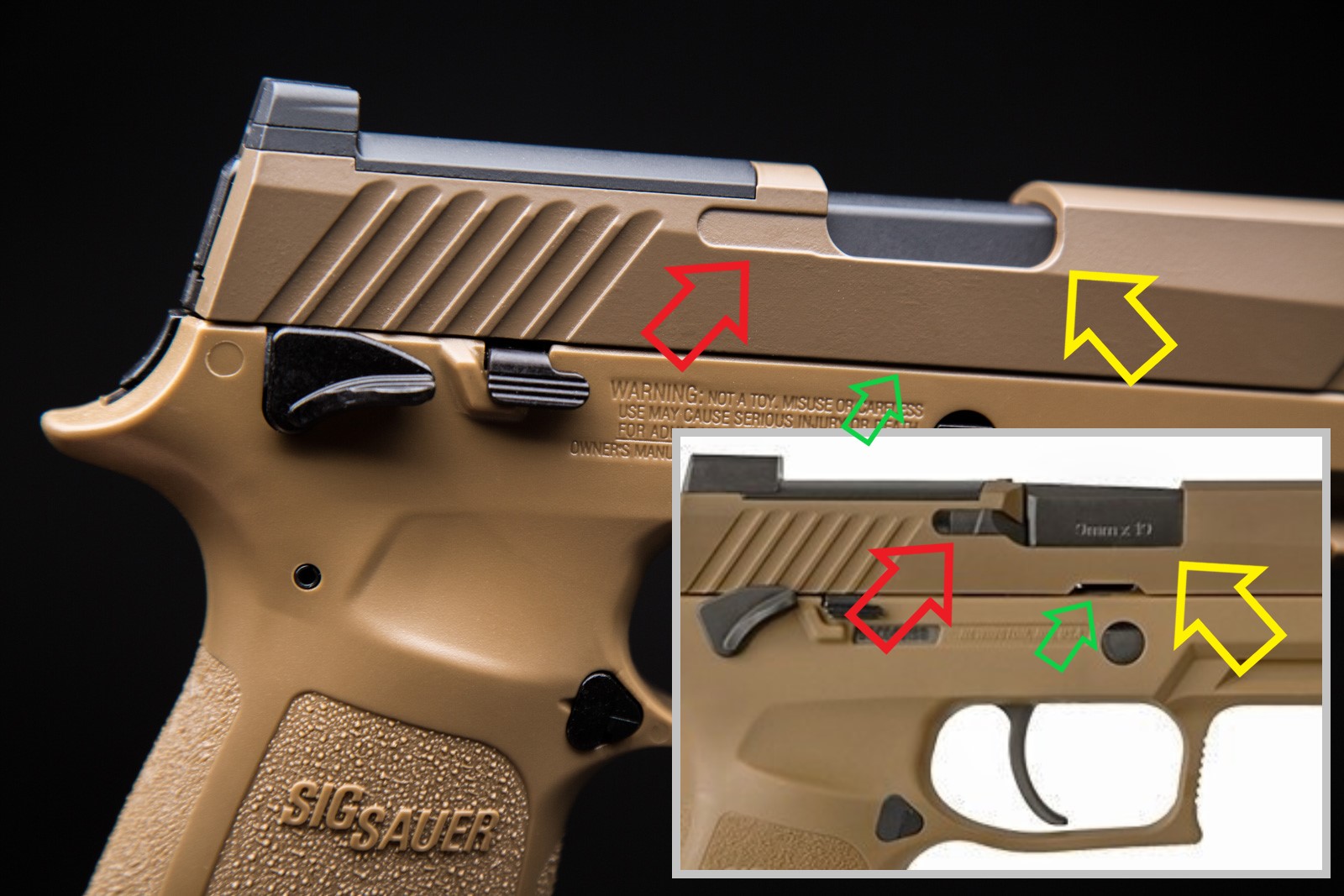
Also, at the top, a different shape of the slide at the ejection port. Here, the real gun is also placed in the thumbnail for comparison.
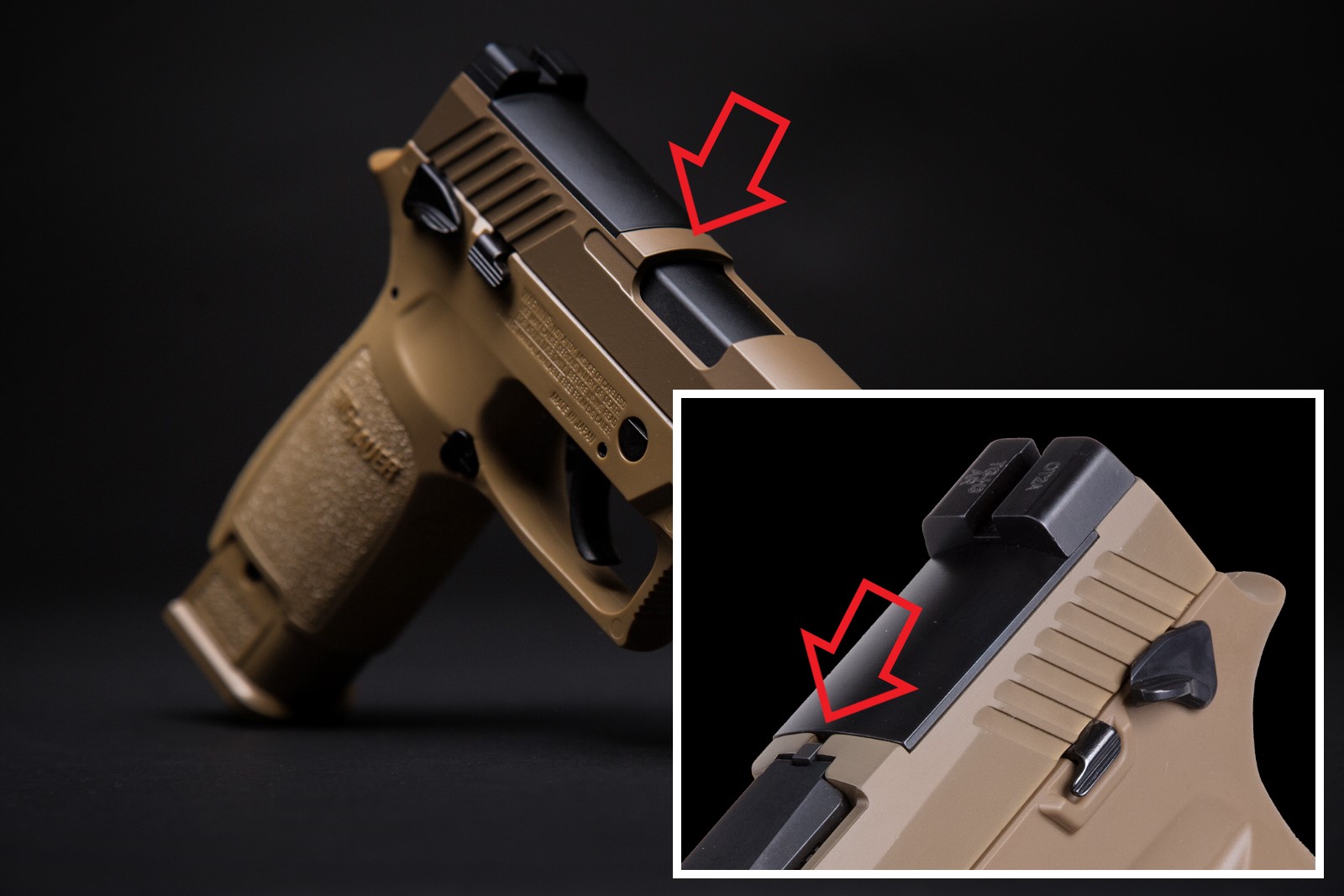
Clearly shorter ribs and a different way of mounting the base cap under the collimator.
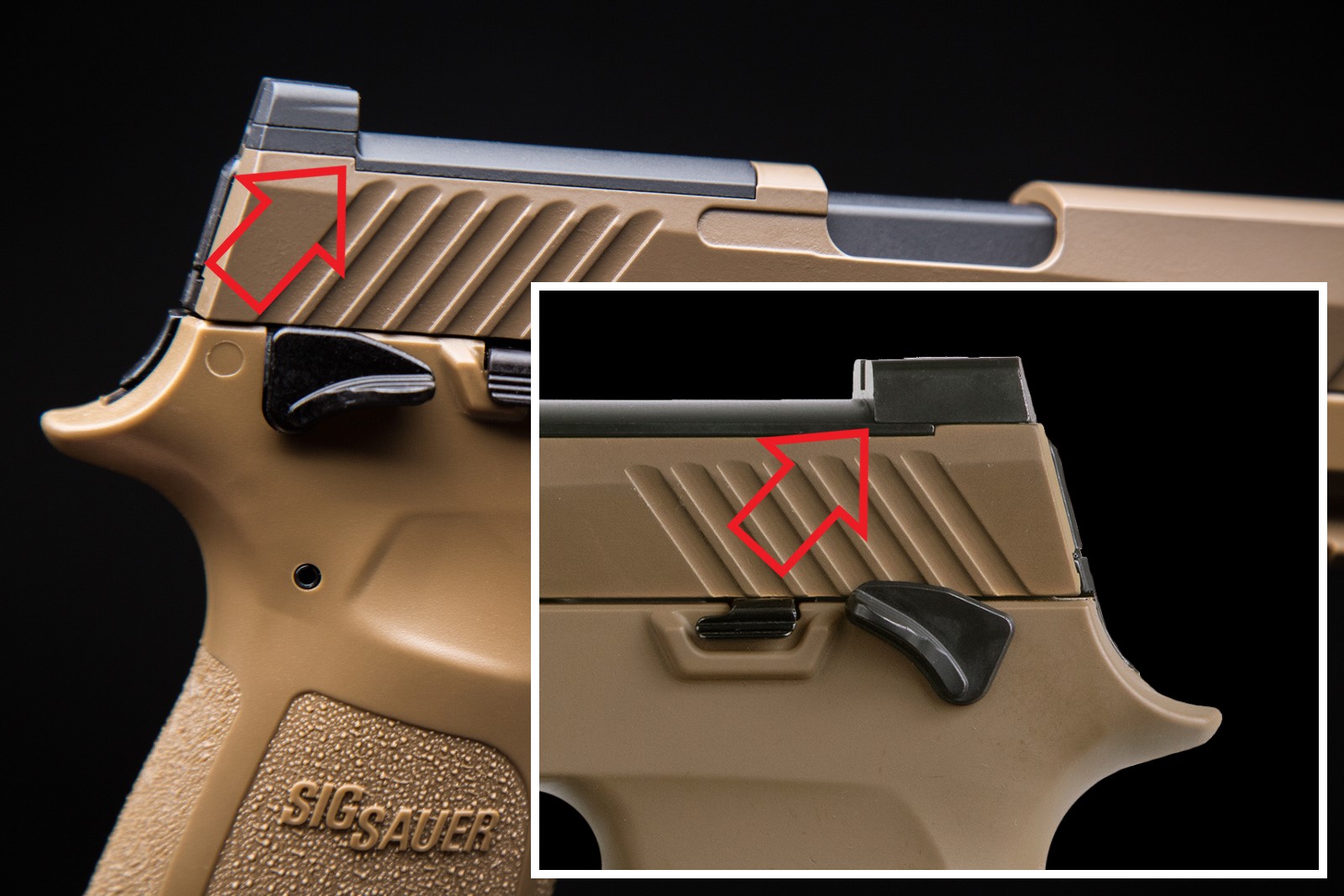
A slightly different shape of the back of the slide and lack of torx head screw.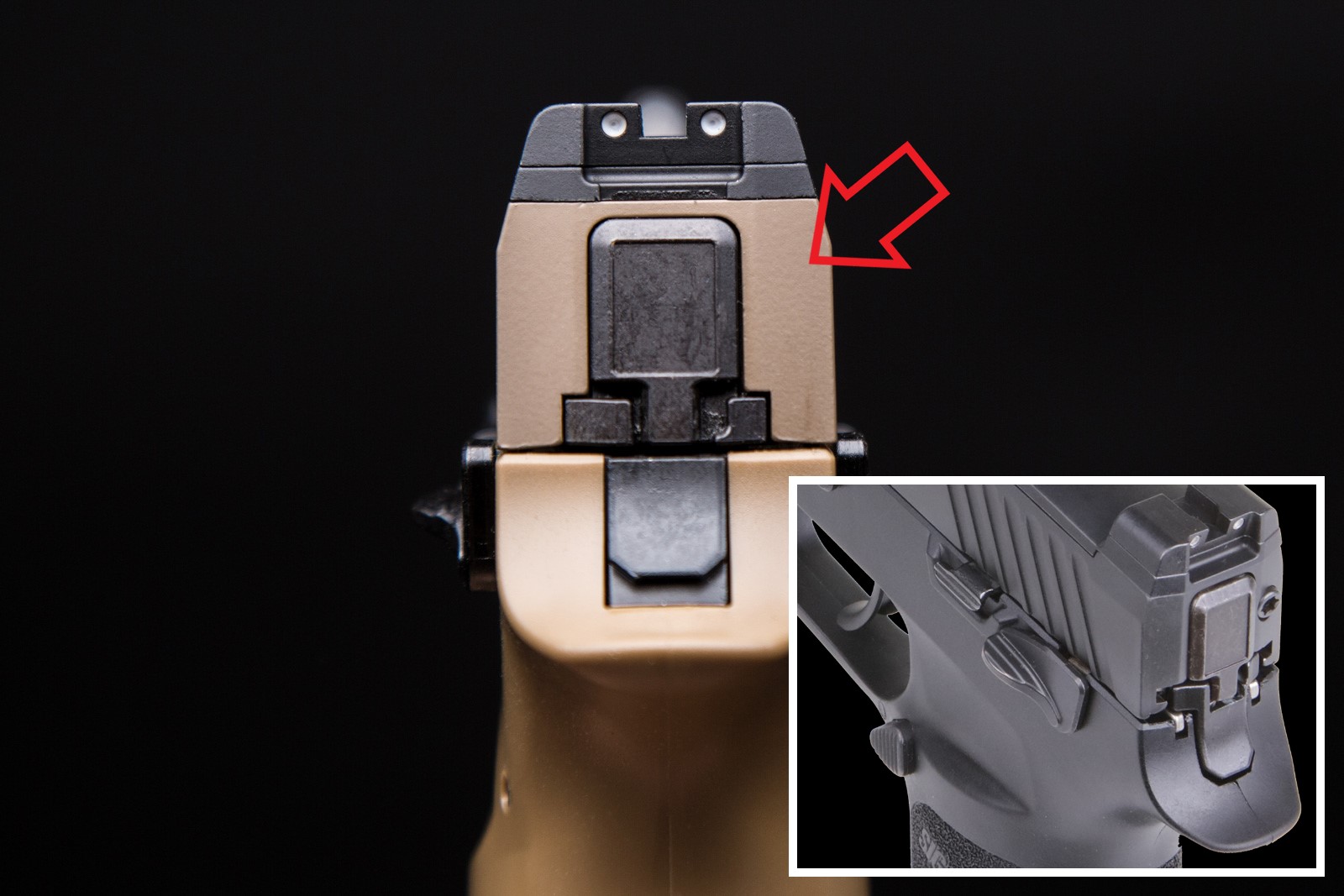
We pay attention to all of this because it was within the manufacturer's reach to ensure a greater similarity with the original gun and it would not necessitate over complicating the design. The parts indicated above are, after all, only external elements that do not affect the operation of the mechanism.
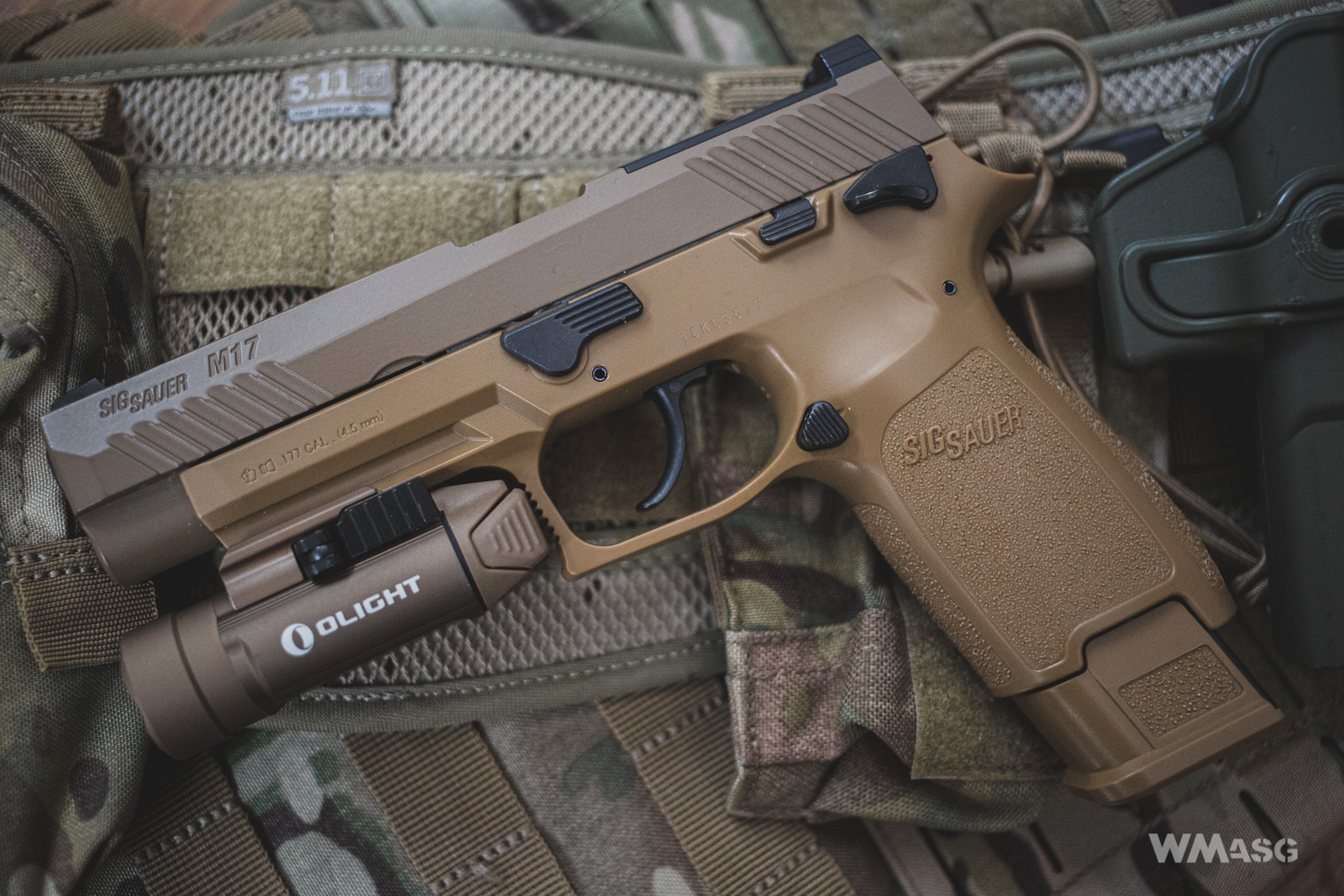
Summary
The idea to briefly introduce you to the airgun was born because of the possibility of a future comparison with the airsoft version and the real gun. We thought it would be all the more interesting because this particular airgun is, in it concept and manufacturer's declarations, a faithful replica of the real gun and, therefore, we paid special attention to the accuracy of reproduction. Finally, it is not a licensed replica, but a third (and a second pneumatic) M17 version of Sig Sauer's production (in reality, one of the Japanese factories is responsible for the production of this airgun). Of course, due to the nature of the portal, we will not try to review the real gun, but we will treat it as a reference point and check how the two pneumatic versions, that the manufacturer himself calls simulators, are similar to the real deal. The airgun makes a very positive impression after being picked up. It fires well too. The workmanship is at a high level, therefore it is even more surprising that there is a lack of consistency in finishing details relative to the original. The differences made in the 4.5 mm pellet version are already known. Now we are waiting for the airsoft replica.
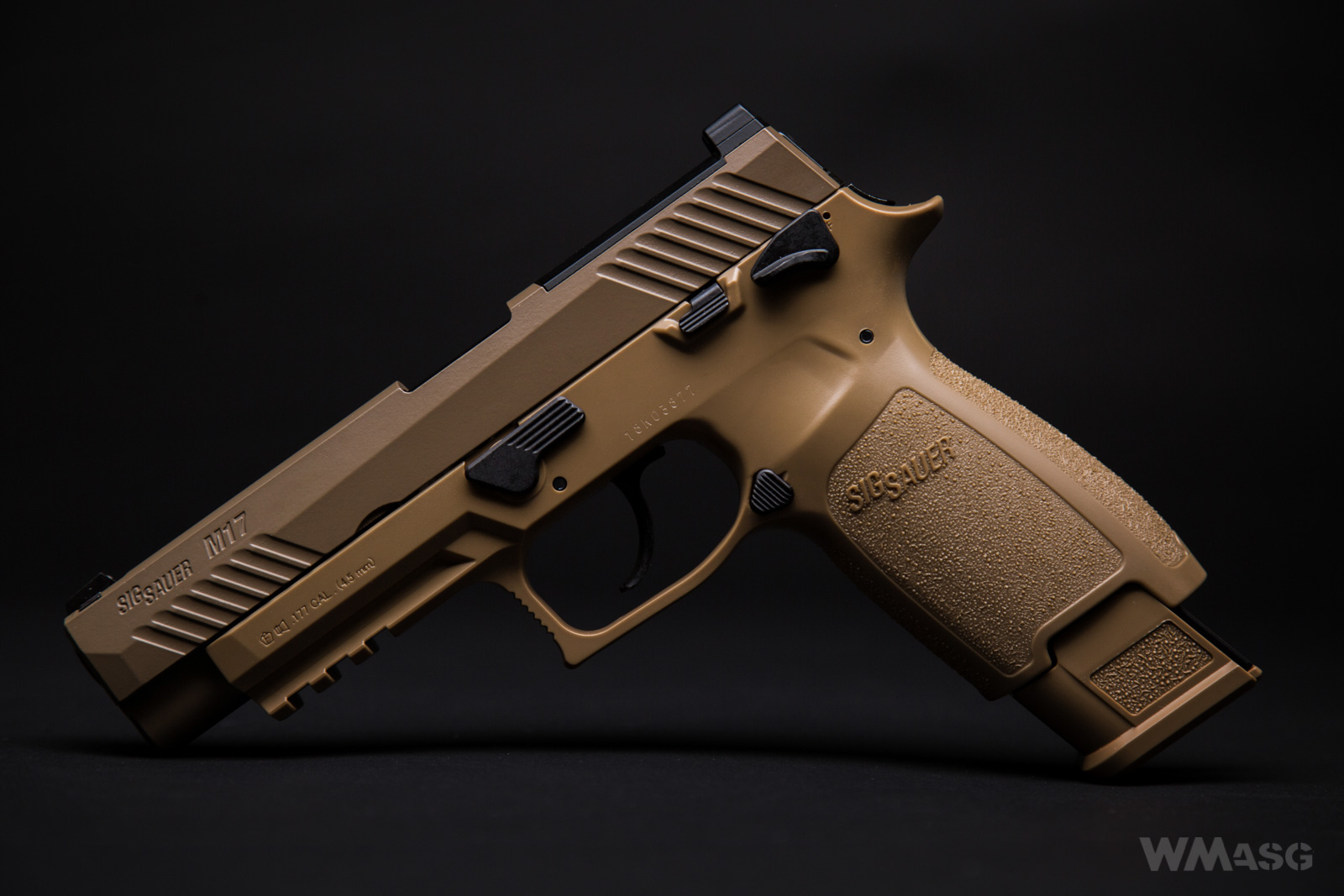
The review was written in courtesy of SIG SAUER.
Useful links:
Official website SIG SAUER: https://www.sigsauer.com/
Facebook Fanpage SIG SAUER: https://www.facebook.com/SIGSAUERInc/



